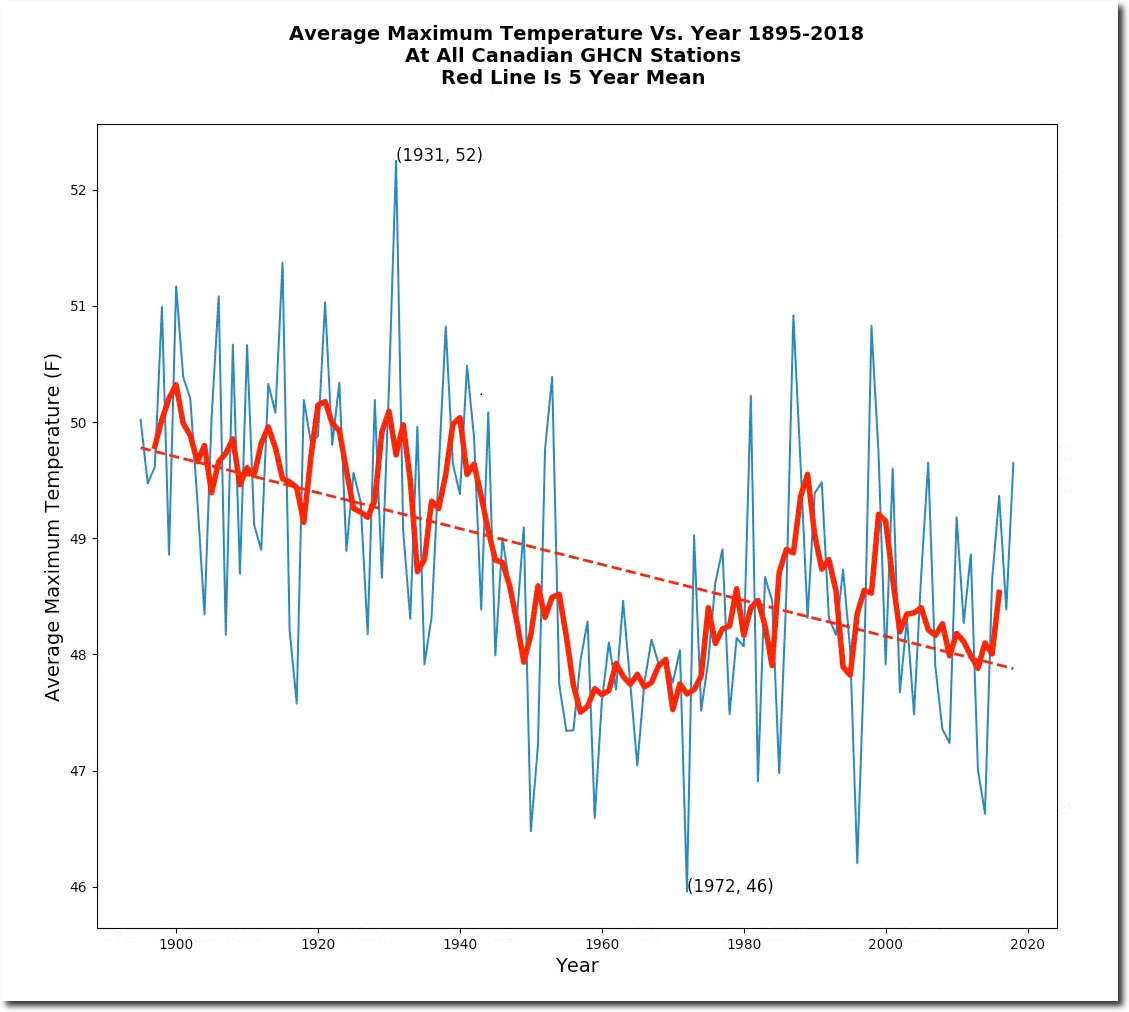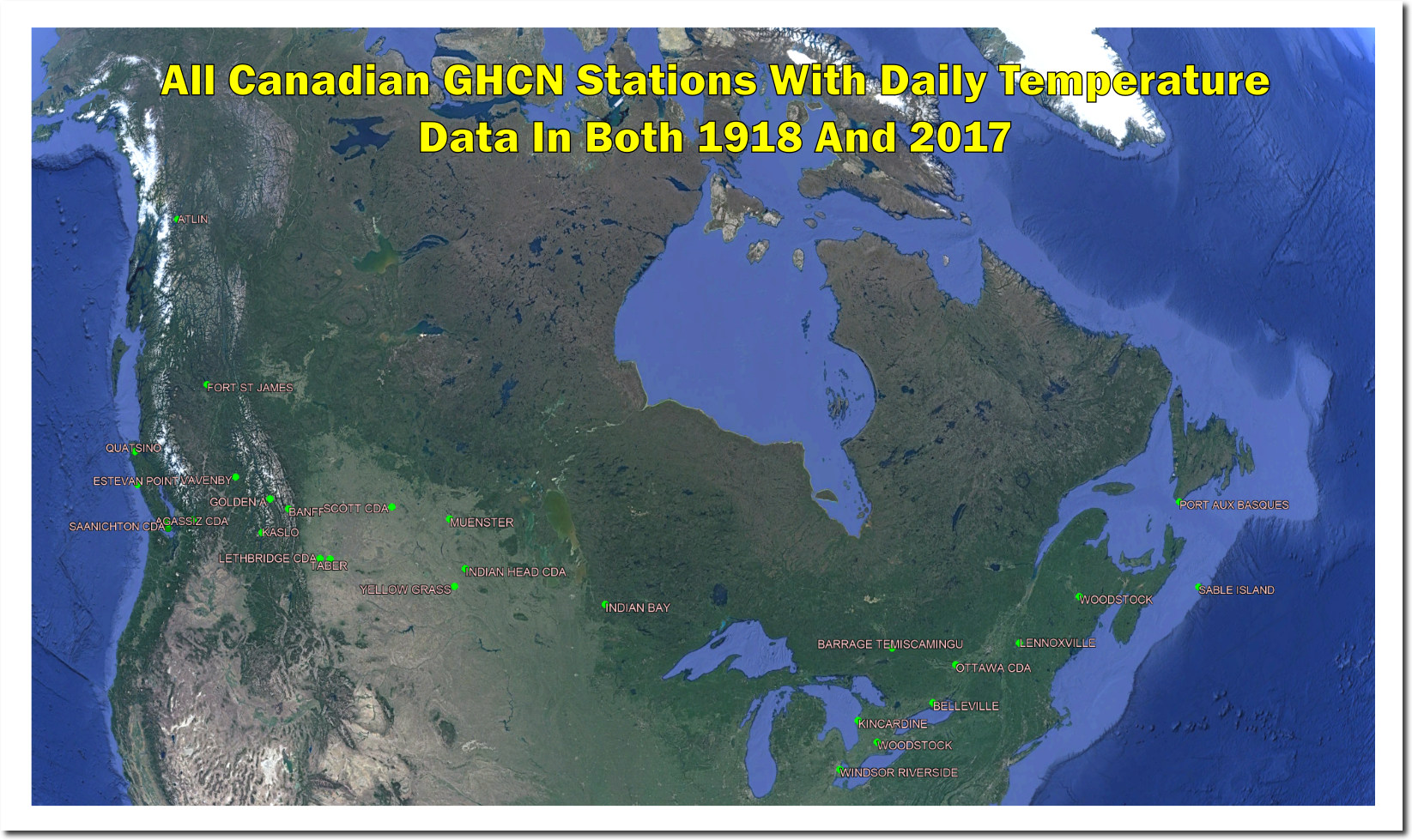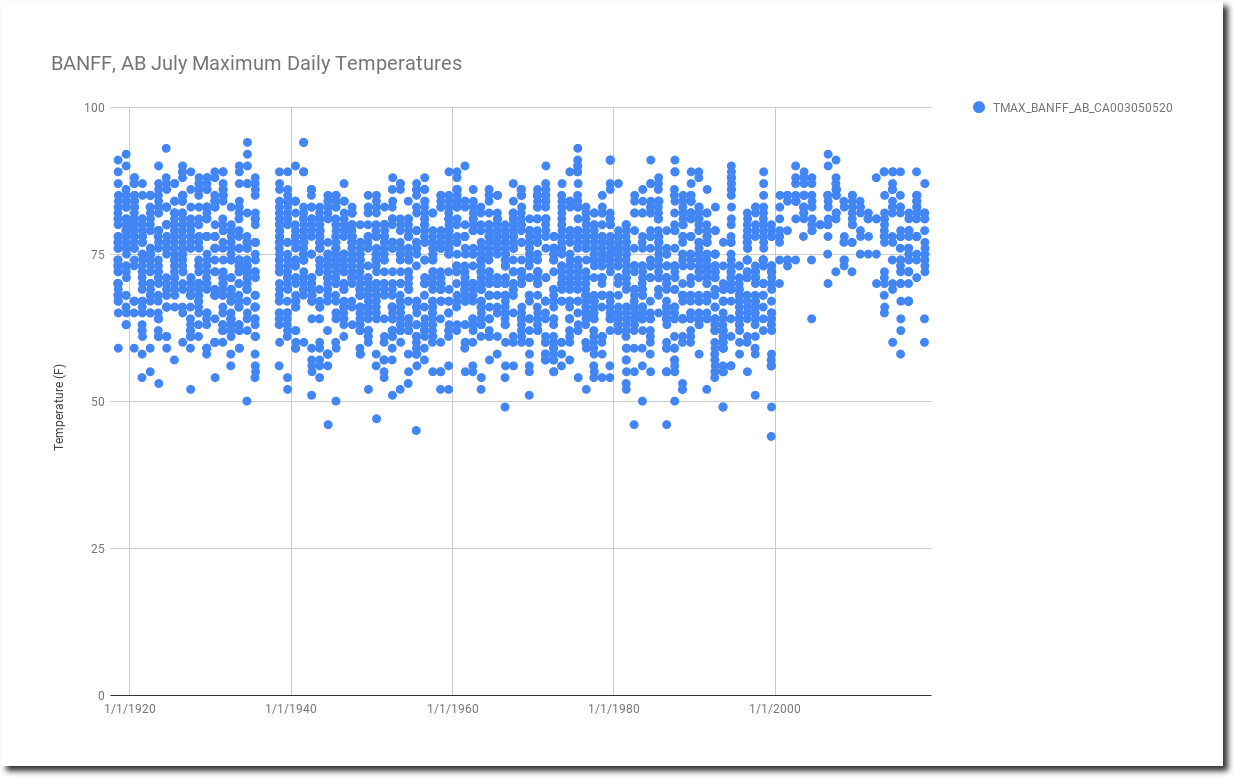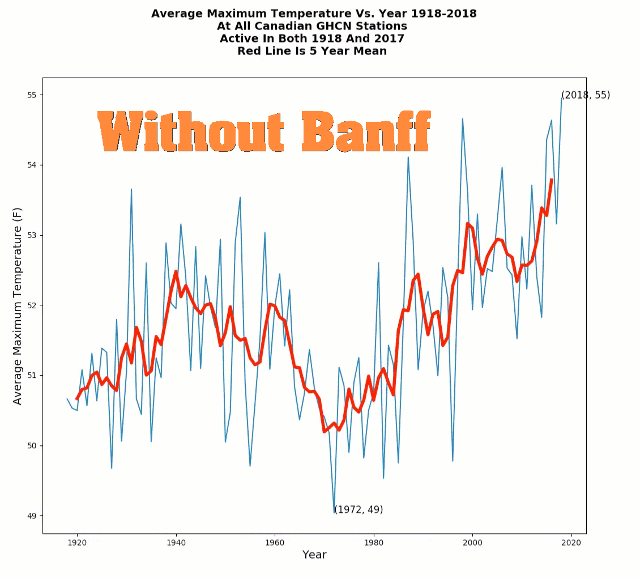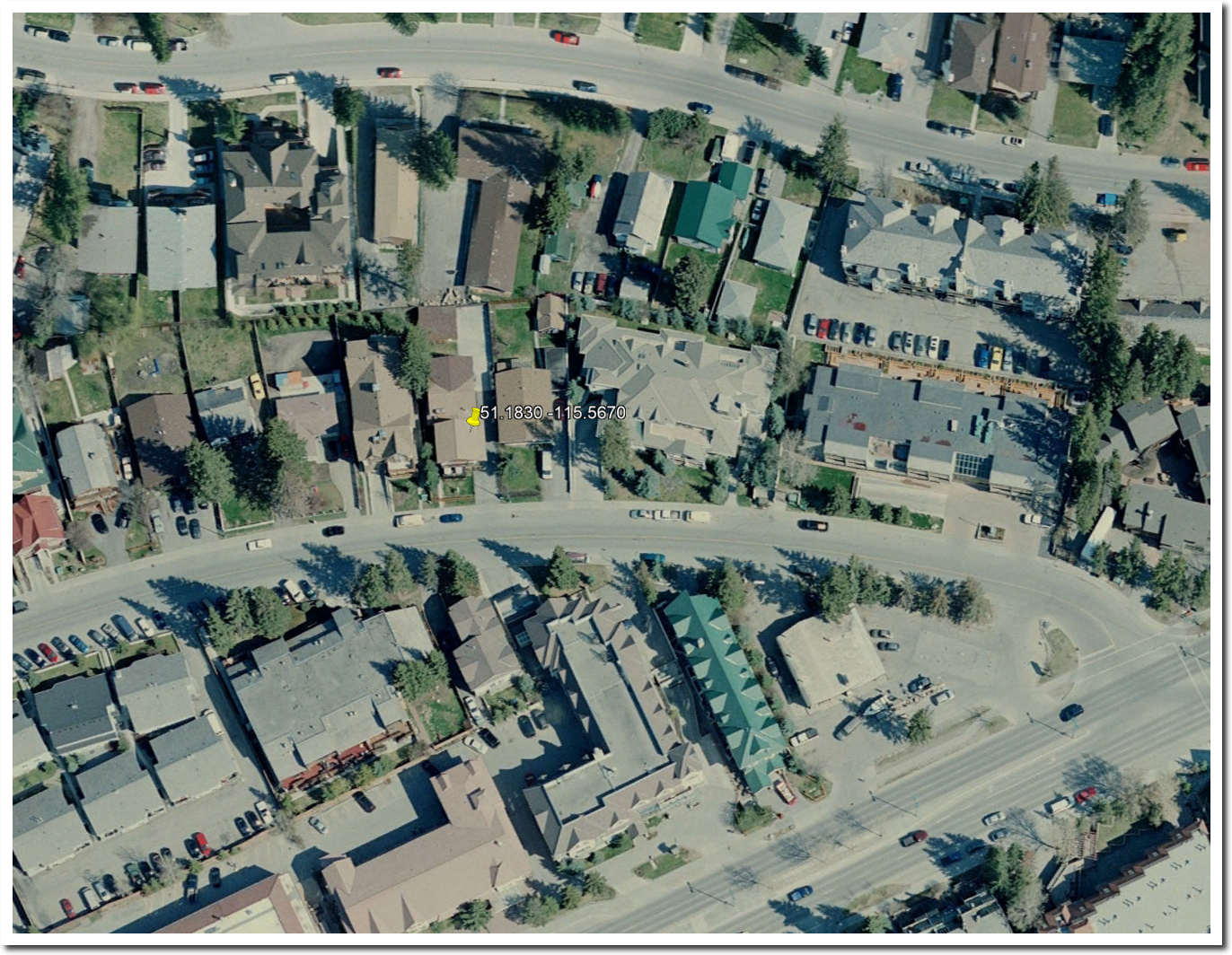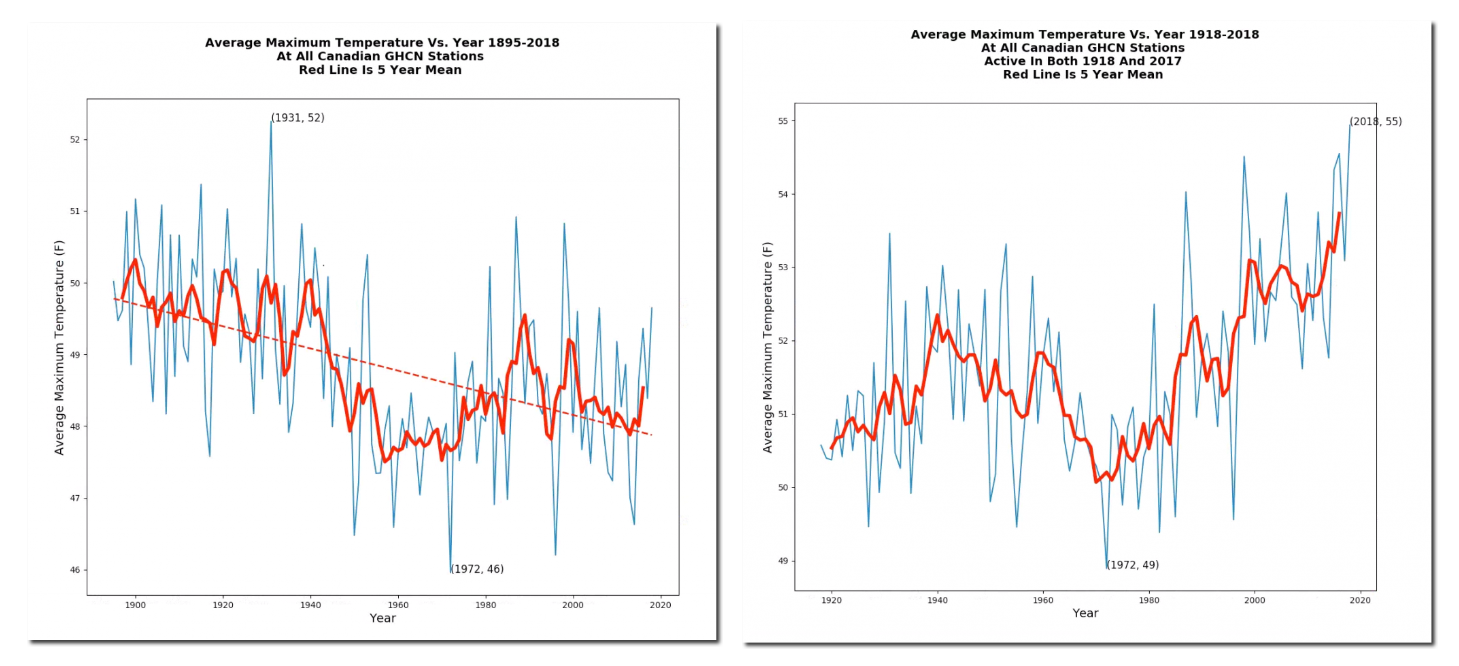I have been analyzing the Canadian temperature record, and it is a farce. There are less than 25 stations in Canada with a relatively complete long term daily temperature record .
The average maximum temperature for all Canadian GHCN stations has plummeted since the 19th century, but the trend is meaningless because the average latitude of the stations has moved four degrees further from the equator during that time period.
If we look at only the stations which were active in both 1918 and 2017, they show a big jump in temperature at the year 2000. But there are some problems which make the trend meaningless.
First (huge) problem is that there are only about 20 GHCN stations in Canada which have reported consistently for the past century, compared with more than 700 in the US.
But here is the real killer. The jump in temperatures after 2000 is largely due to something going on at one station – Banff. Something went seriously wrong with that station after the year 2000, where almost all of the low maximum temperatures disappeared.
Without Banff, 2010 is barely warmer than 1940.
The yellow pin is at the latitude and longitude where GHCN lists the thermometer. It is almost like the moved the thermometer indoors.
You really can’t make this stuff up. Like just about every other country outside the US, the Canadian temperature record is a farce. I’ve developed some pretty sophisticated tools for detecting these problems, and I doubt that the people at Berkeley Earth, NASA and NOAA are even aware of how awful the global temperature record is.
The number of stations with long term records in Canada and their geographical location is much too small to draw any meaningful conclusions about Canadian temperature trends. You can get whatever trend you want by picking the right set of stations.

